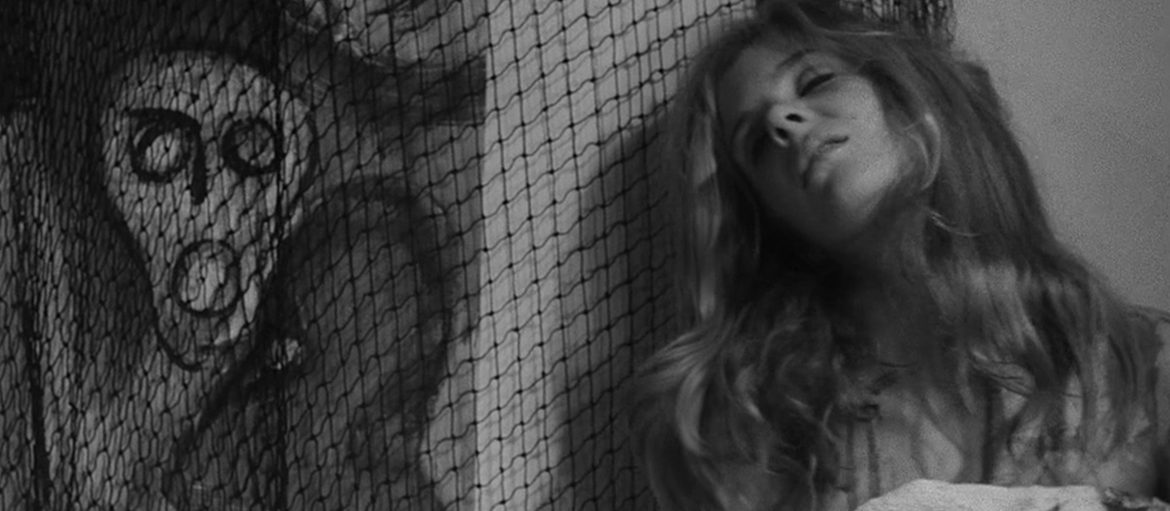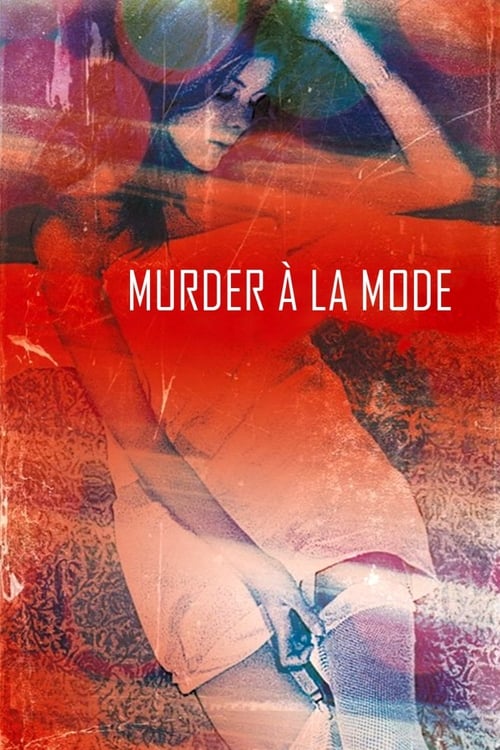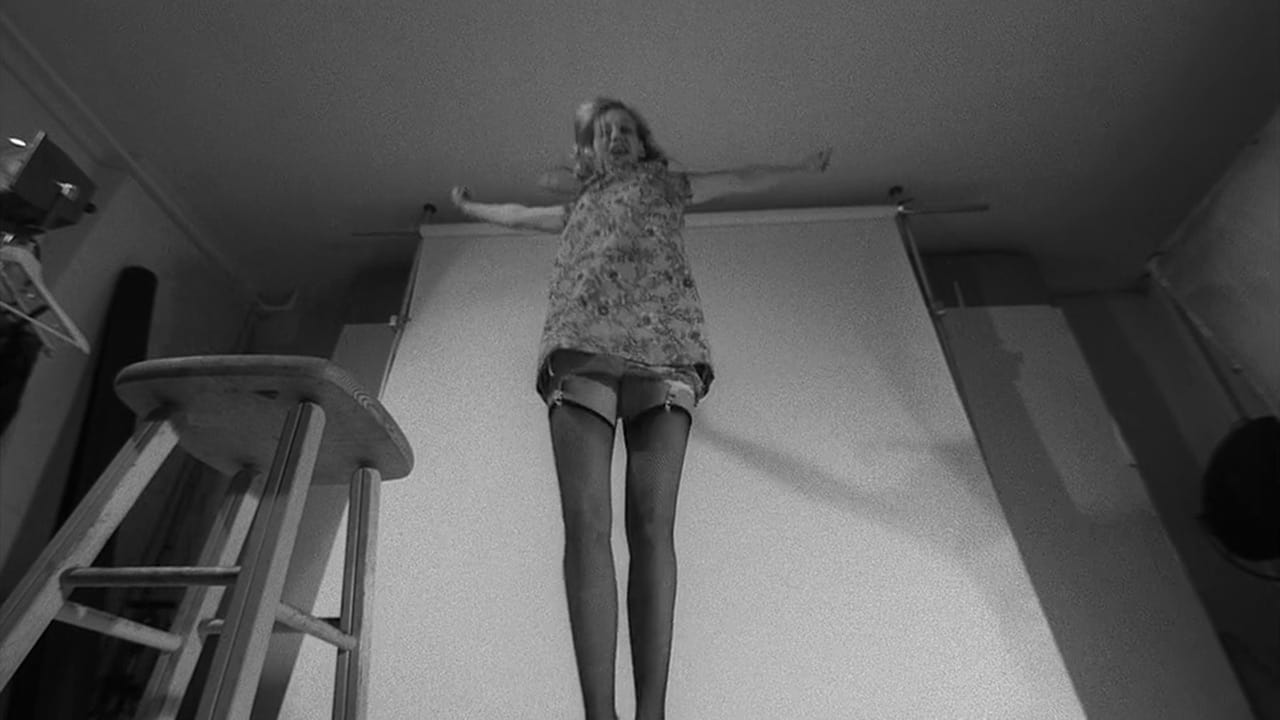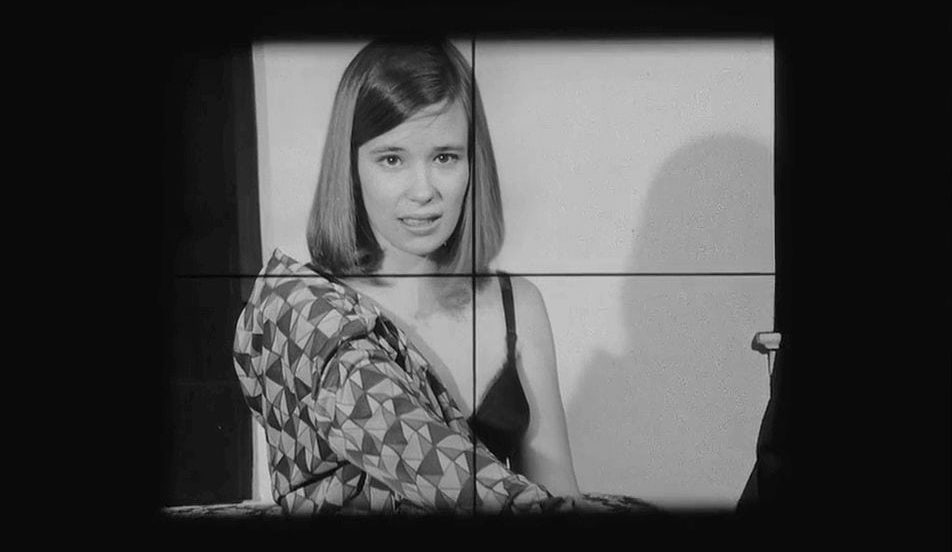

“I’m a clumsy man of words, I’ll show you in pictures.”
Murder à la Mod is Brian De Palma’s proper debut following the cooperative student film The Wedding Party (which was not released until 1969). Presumed lost shortly after its single-theater run in NYC, it was recovered decades later and, in light of its contents, prompts a slight reassessment of the auteur’s early career. Film history had previously glossed right over De Palma’s offbeat comedies with Robert De Niro and cited Sisters as the moment when he first adopted the schlocky Hitchcockian style that he’s built his career upon. Thus, Sisters was more or less the farthest it made sense to trace back (unless you wanted to see young De Niro). And yet Murder à la Mod is nothing like those comedies, but rather reads like an ambitious thesis of the recurring themes, narrative devices, and framing techniques that he would explore throughout his prime. It’s shabby and impenetrable with a slew of competing influences, from silent slapstick to New Wave, not to mention an undeniable debt to Peeping Tom, but there’s no mistaking it for the work of anyone but De Palma. Bloodied women, multiple viewpoints of the same event, depictions of the physical filmmaking process, William Finley, Jennifer Salt—it’s all here in a gleeful, goofy low-budget film that is heavily flawed but provides early evidence of the director’s burgeoning talents.
De Palma has been criticized more than once throughout his career for a lack of substance and that’s certainly the case here, as Murder à la Mod is more concerned with narrative structure, editing techniques, and homage than with conveying a story. The prologue concisely sketches out De Palma’s thematic and visual interests, beginning with a series of still photographs, then seamlessly cutting to a voyeuristic photoshoot in which the camera is on the floor and pointed up the subject’s dress. Reluctantly, after the model is captured in various outfits, she agrees to strip for the camera. Just as she is about to expose herself, the cameraman produces a razor blade and slits her throat. This shocking moment is immediately countered when several more women are shown in the camera’s viewfinder, repeating the same lines about making enough money to cover the cameraman’s divorce costs so that he can begin a new life with his muse. One of them asks about the part that she’s auditioning for and is sharply reminded that the film is rolling. The man behind the camera speaking to the women is none other than De Palma himself.

We’re then introduced to Karen (Margo Norton), an impressionable young lady who seems to embody the character that the others had auditioned for—she’s fallen in love with Christopher (Jared Martin), a covert pornographer who’s making skin flicks on the side so that he can afford to divorce his wife and marry Karen. Despite the misgivings of her out-of-town friend Tracy (Andra Akers), Karen heads to Christopher’s studio to oblige his request to star in a lurid segment of a nudie film. But then Otto (William Finley), a creepy prankster who produces and acts in Chris’s movies, comes up from behind and stabs her with an ice pick. Then he pulls it out and thrusts it into her eye. When Chris finds the corpse he vows to catch the killer. At this point, the film enters into a Rashomon routine, repeating the same narrative several times from different perspectives—a narrative trick that De Palma would come back to in Snake Eyes and Femme Fatale. More frequently, though, he would employ splitscreen to portray multiple perspectives on the same event.
Deliberately, we can never nail down if what we’re seeing is real or not, because none of it’s real. De Palma is adamant that we understand the artifice of cinema, that nothing is set in stone, that ultimately the narrative is malleable. In operating in this mode, he severs any connection to his characters and by the fourth time through we don’t actually care if anyone has been stabbed or if a retractable prop ice pick and ketchup was used. But I remind you that the characters and the story are secondary. De Palma is content here to flaunt his vast cinephiliac knowledge and test the waters for himself. The uneasy artifice generated by the narrative trickery is reinforced as De Palma giddily bounces between all of the different filmmaking techniques he can’t help but jam into his picture, whether that be a pervasive disembodied voiceover for a single character, sped-up physical comedy à la Buster Keaton, a preponderance of shots that call attention to the presence of the camera, pretentiously jerky editing, repeating a line of dialogue in an overheard soap opera, or an unabashed homage to Psycho. The point seems to be that you can’t trust anything that’s been conveyed because it’s all fake.

The most telling moment in the film comes when Chris reveals his true occupation to Karen. In the studio where he ostensibly makes experimental films, he subjects her to a gross skin flick and then pulls back a screen that has been hiding a porno set. The episode clumsily tries to make a bridge for an artist who wants to be taken seriously but also enjoy his crude fantasies; a notion that is also evident in the way that Chris obstinately refuses to touch his fiancée and yet he makes films that exploit the female body and captures footage of unwitting women with a hidden camera in the ceiling. And standing against this ashamed, frustrated voyeurism is Otto, a fiend who revels in debauchery of all sorts. De Palma makes a very self-aware comment when he describes the kind of person who would watch one of his titillating films: “he can be a pervert, a sex maniac… and when the lights come on, he’s just another fellow taking in a movie.”
In Murder à la Mod, De Palma does not reach the thrilling heights that he would later in his career. But even with young, unpracticed hands, he demonstrates a deep familiarity with the cinematic paradigms he’s working with—deep enough that he’s comfortable twisting them into new shapes, albeit clumsily.